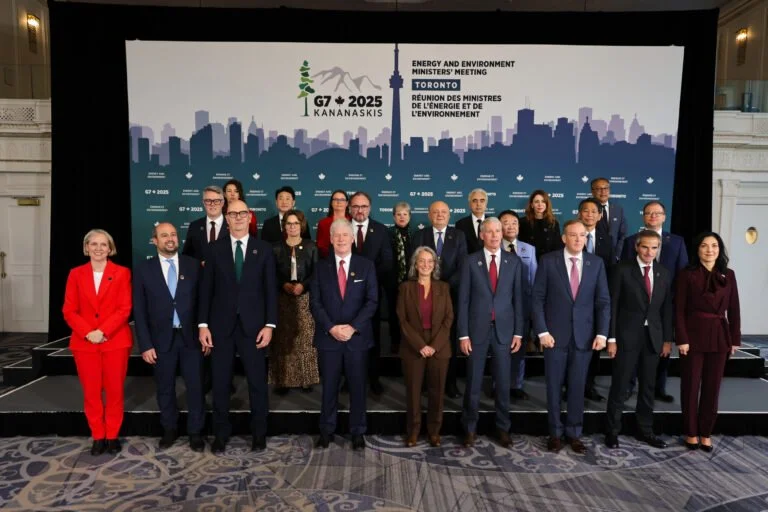Powering the Future: Why Fusion Needs Global Collaboration
The fusion industry’s greatest breakthroughs won’t happen in isolation. Turning a scientific experiment into a global energy solution takes the combined effort of nations, companies, and researchers worldwide. Collaboration isn’t just helpful but it’s essential. By pooling funding, expertise, specialized supply chains, and regulatory know-how, international partnerships can spread risk, accelerate innovation, and lay the foundation for a truly global clean-energy market.
Why do Fusion Needs Collaboration
One of the key drivers of success for the fusion industry is collaboration. Turning fusion from a laboratory experiment into a real, scalable energy source requires help from across the globe since it simply cannot be done alone. International collaboration accelerates this process by connecting expertise, aligning investments, and creating complementary innovation ecosystems. It also helps build a globally interoperable market that can scale rapidly and responsibly.
Fusion’s complexity makes cooperation inevitable. Major projects like ITER—the flagship international experiment—have estimated costs that have ballooned to over $20 billion, a figure too immense for any single nation to bear. Fusion requires a global sharing of financial risk and intellectual property to prevent costly duplication of effort. A single reactor project might rely on superconducting magnets from Japan, cryogenic systems from Europe, plasma control from the U.S., and materials science from Canada. This interconnectedness reflects the global challenge fusion aims to solve, to provide clean and abundant energy for everyone.
Recent International Fusion Collaborations
While large, multi-decade projects like ITER remain the cornerstone of global fusion cooperation, a new wave of targeted, public-private collaborations has expanded worldwide in recent years, focusing on specific, critical technical challenges:
Tokamak Energy and King Abdulaziz City for Science and Technology
A partnership between the United Kingdom Tokamak Energy and Saudi Arabia’s national research and innovation institution focuses on developing national capabilities in fusion energy and High-Temperature Superconducting (HTS) magnets. The collaboration will combine Saudi investment and industrial capacity with Tokamak’s advanced magnet expertise. This is a move that supports both nations' clean energy ambitions, and also a prime example of knowledge transfer between a pioneering private company with a national laboratory.
Kyoto Fusionering & Canadian Nuclear Laboratories
The two formed a joint venture called Fusion Fuel Cycles Inc. (FFC) to tackle the indispensable challenge of the deuterium-tritium (D-T) fuel cycle. This collaboration bridges Japan’s engineering leadership with Canada’s strong nuclear infrastructure, targeting one of fusion’s most critical and complex challenges to manage tritium safely and efficiently.
The EU and Japan Broader Approach Activities (BA)
This is a long-term strategic partnership between the European Union (through F4E) and Japan (through QST) designed to complement and support ITER. Its three main projects accelerate key technologies needed for the next step, DEMO (the demonstration power plant):
JT-60SA: The world’s largest operational superconducting tokamak, focused on achieving long-pulse, high-performance plasma, offering crucial data for ITER.
IFMIF/EVEDA (LIPAc): Focused on materials testing for future reactors, to ensure new materials can withstand the harsh neutron environment.
The United States and Japan Technology and Prosperity Deal
Under their new Technology and Prosperity Deal, the U.S. and Japan formally prioritized fusion energy as a core area for bilateral cooperation. The agreement includes joint work on superconducting magnet manufacturing, neutronics modeling, and the development of resilient fusion supply chains. It marks one of the most significant G2G commitments to date in advancing commercial fusion deployment.
G7 Countries Energy Minister Statement for Fusion Collaboration
G7 energy ministers released a joint statement urging greater international collaboration on fusion. Their communiqué highlighted the importance of consistent regulatory frameworks, shared standards, and open scientific cooperation to signal strong political will among the world’s largest economies to align on fusion’s future.
Together, these partnerships show how fusion’s momentum now extends far beyond research labs. They bring together diverse strengths, capital, expertise, infrastructure, and policy alignment, to form the foundation of a truly global fusion ecosystem.
Insights from Global Partnerships
These partnerships reveal a clear trend: fusion collaboration is expanding in both scope and ambition. It’s no longer limited to scientific cooperation; it now encompasses industrial supply chains, workforce development, and regulatory harmonization.
This new wave of cooperation is key to de-risking the technology. By isolating and solving major engineering bottlenecks—like tritium breeding (FFC) or materials science (Broader Approach)—these partnerships provide validated, commercial-ready systems that can be integrated into diverse reactor designs globally. Fusion is shifting from research-driven to deployment-ready, and collaboration is the bridge between the two. Countries are recognizing that by working together today, they can share costs, reduce duplication, and accelerate time-to-market tomorrow.
More importantly, this wave of collaboration signals a shared belief: fusion is not a zero-sum race. Its success depends on collective progress. By connecting innovation hubs from countries around the world, fusion is shaping a new model of clean-energy diplomacy that one built on trust, transparency, and mutual gain.
A Shared Path to the Fusion Future
As the world races toward net-zero, fusion represents both a technological and diplomatic breakthrough. The power of the stars can only become the power of humanity through shared effort.
If collaboration continues to deepen from across governments, industries, and continents, fusion energy could become not just a scientific milestone, but a global success story powered by partnership and common purpose.



